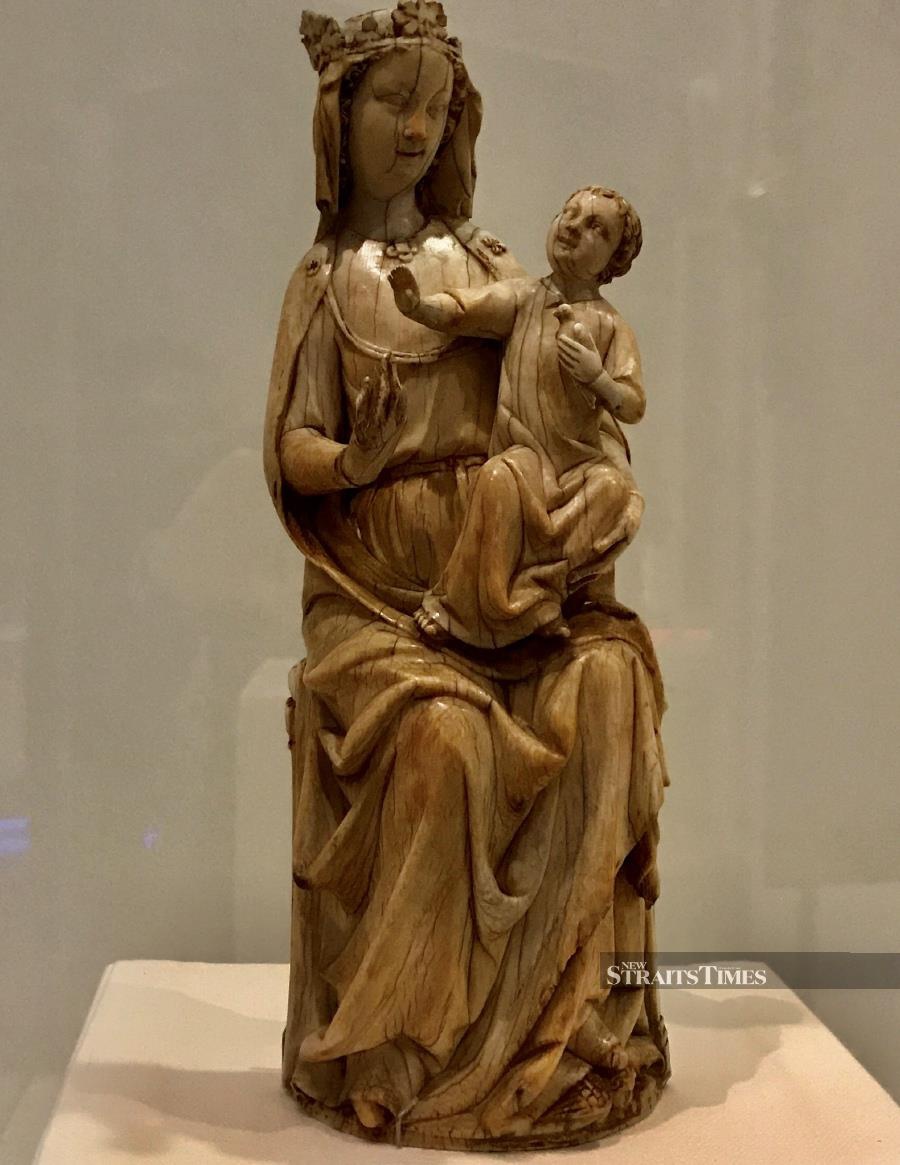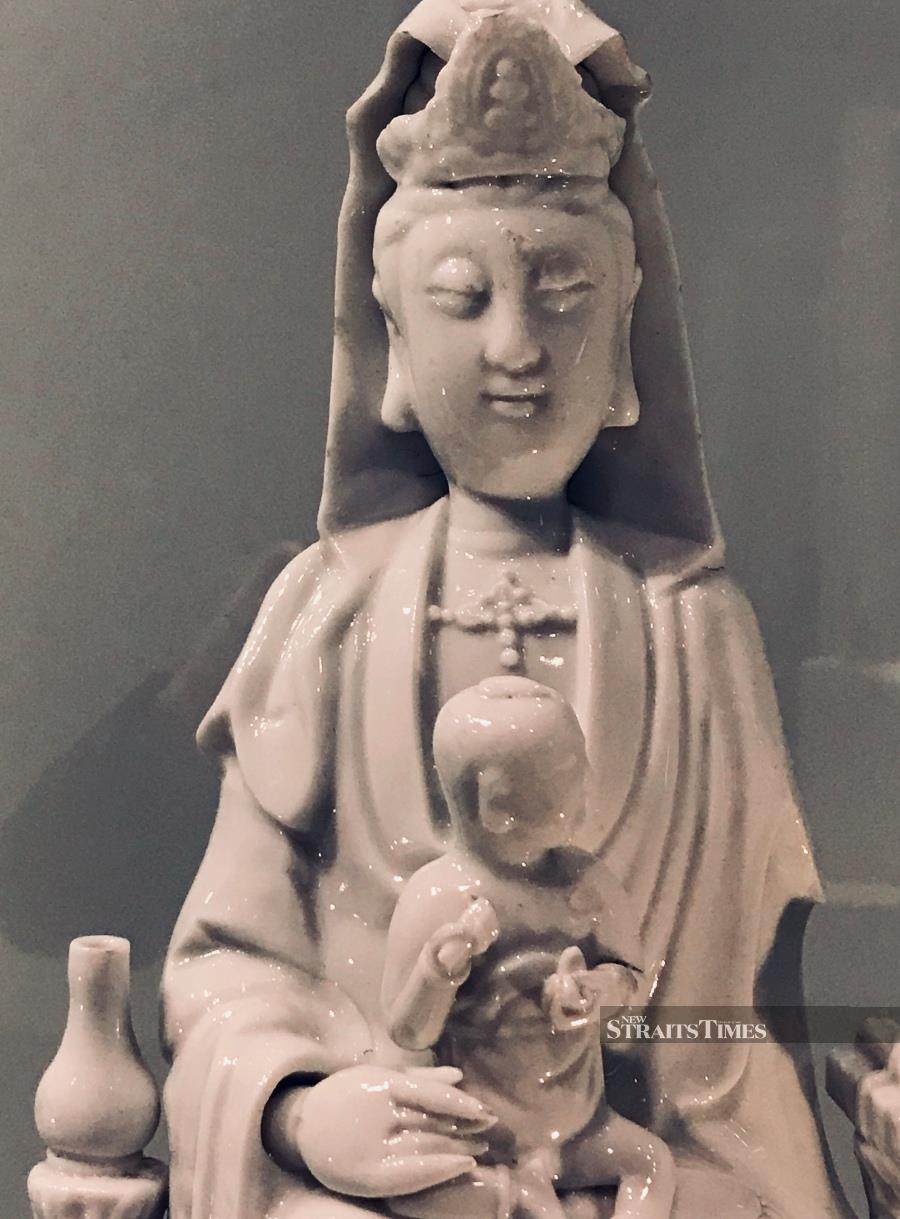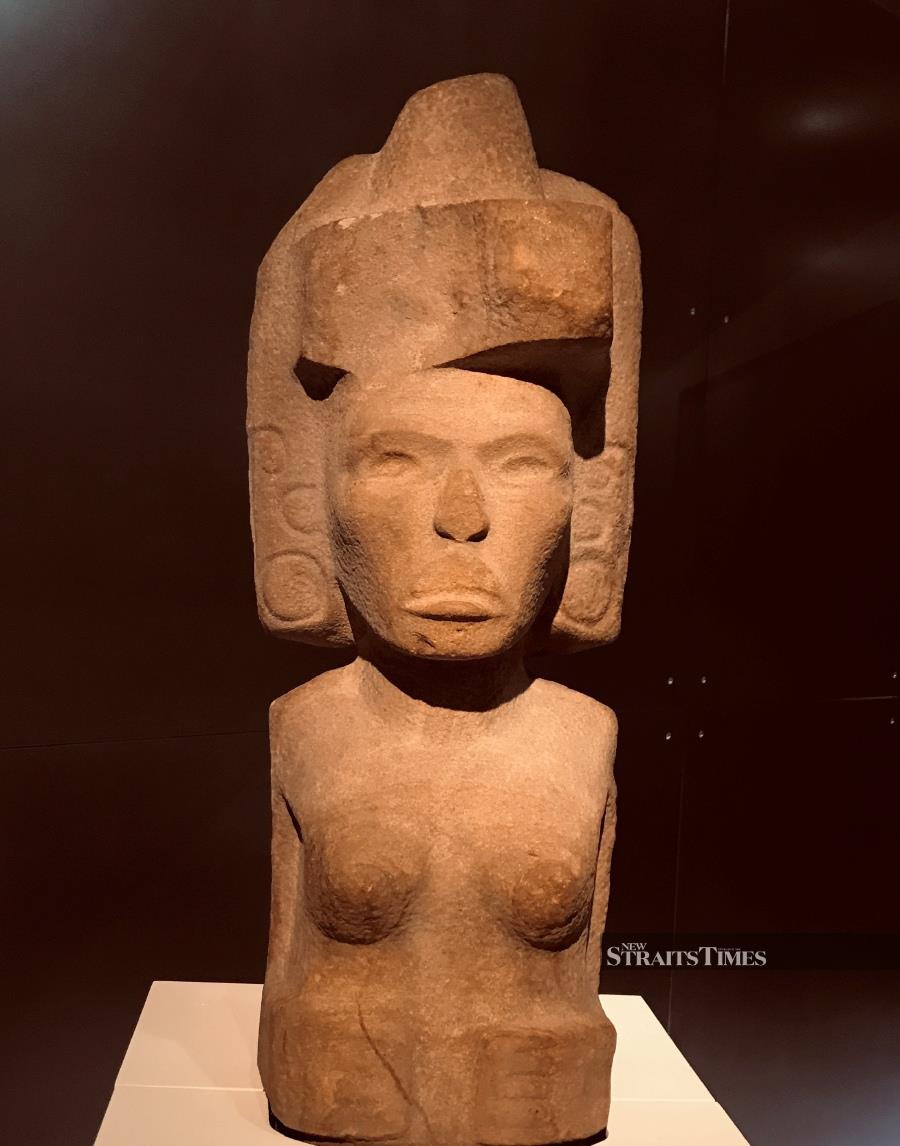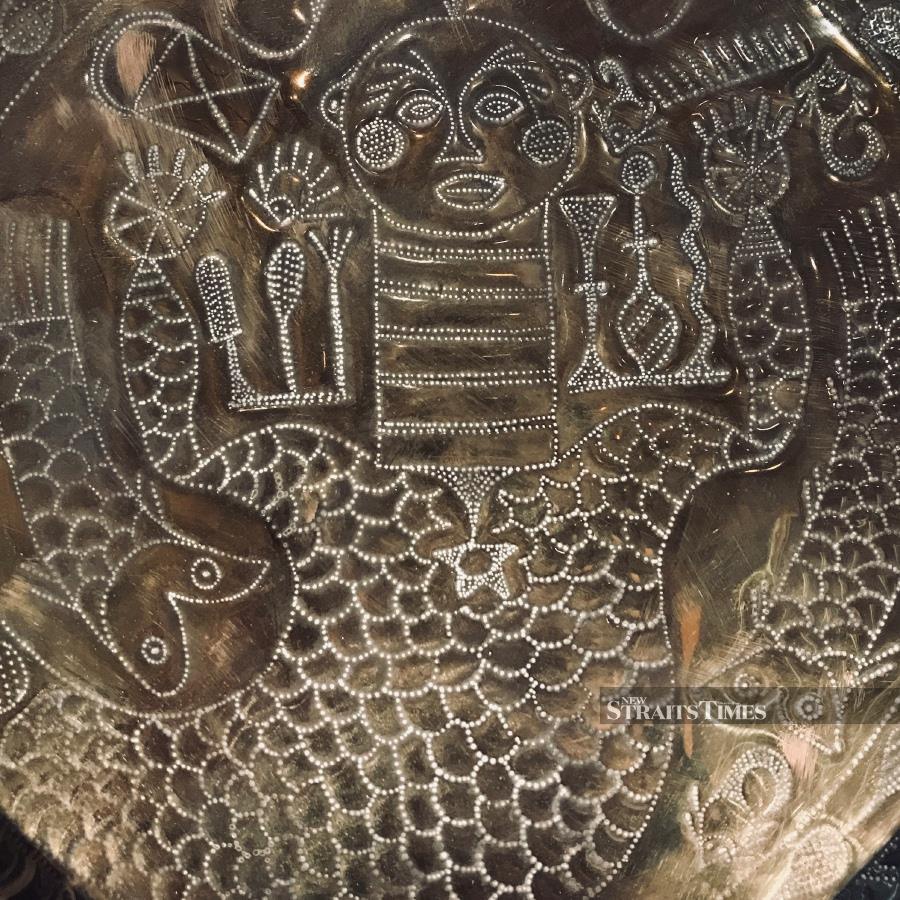WOMEN'S football may be all the rage in Europe at the moment, but it will be hard to wean Malaysian fans off the standard Premier League. The Women's Euro 2022 has almost finished at the same time as the majority of contenders to lead the United Kingdom government are female. Until Sept 25, they also have a prominent showing at the nation's flagship museum.
"Feminine Power: the divine to the demonic" says it all, although I could see plenty of male visitors to the British Museum trying to understand the importance of women in different belief systems.
They have been around for a long time. Among the earliest symbols of women's centrality to the mysteries of life are figures such as the Willendorf Venus — not on display here.
Despite being almost 30,000 years old, the voluptuous proportions of this 11cm stone carving make it less a symbol of feminine power and more of a child-bearing symbol.

This exhibition is about women, whose role is wide ranging and more than just making babies. Many are far from what you would want your mama to look like.
There are some scary-looking females out there, and the British Museum has brought many of them to the party. Some appear more seductive than powerful, such as the 4,000-year-old Ishtar statuette from Mesopotamia, until one spots the talons instead of feet.
REPRESENTING WOMANHOOD

There is a tremendous variety of chronology and geography to the contents of this exhibition. Those of us who are used to images of women, who are either alluring or motherly, are in for surprises.
It just so happens that Islam, Christianity and Buddhism tend to specialise in the gentler version of womanhood. In this exhibition, the Virgin Mary is shared between the world's two biggest religions.
Buddhist womanhood is represented mostly by Guanyin, who definitely has a feminine side, but is still in the gender-fluid realm.

Mariam/Mary is the sole powerful Muslimah here, which is a bit sad considering that a few years ago, I could find enough to create an entire exhibition about influential Muslim women. It included everyone from the Queen of Sheba to an Iranian lawyer with a Nobel prize.
One look at this exhibition will tell visitors that the British Museum is determined to go beyond the mainstream belief systems. Hinduism, however, provides plenty of material. There is a drama and frequent eroticism to these images that make them irresistible to curators of blockbuster exhibitions.
After this museum's recent triumph with the arcane field of Tantra, there are still plenty of deities to go round. The appeal of Radha and Lakshmi is matched by the more complicated presence of Mahadevi and Taraka "the flesh-eating ogre".
TERRIFYING FEMALES

Belief in terrifying females is by no means confined to India. Ancient Egypt had its very own Sekhmet "Lady of Slaughter". She is the well-known figure who turns up frequently in imagery as a lion-headed woman, to represent her ferocity. What is less apparent is that her father, Ra, tried to quench her blood-lust with a supply of beer dyed red to fool her.
Other parts of Africa have taken a different approach. Women in the Congo have traditionally been shown propping up throne legs, not because they are a harmless part of the furniture but, it seems, because they have the power to support the entire universe.
In Japan, women of influence tend to take the form of demons. Or witches. Either way, they are capable of looking alarming or summoning up beings that are terrifying enough to scare off the fiercest-looking samurai warriors.
More predictable in their assertiveness are the Aztecs. In sculpture, at least, it seems to have been a society filled with female warriors. Carved in stone and placed at the roadside, they must have made an impressive sight.
Unusually, women who died in childbirth were also given divine status. Respected and feared, their spirits were thought to descend to earth on certain occasions, which must have shaken up the male Aztecs.

Before this culture dominated Central America, there were the Huaxtec. They had some commanding ladies too. Tlazolteotl is the "goddess of purification", tasked with the awkward duty of clearing up society's transgressions. Literally "eating" adultery — not the adulterers — appears to have taken up most of her time.
These matters of sin and the flesh seem to have been much on the mind of Latin American societies. An ancient deity updated in modern Bolivia is known as China Supay (nothing to do with the People's Republic).
Represented as a mask during Catholic parades, she reverts to her pre-Christian Inca nature by trying to get the wholesome Saint Michael to err from the path of righteousness.

Mami Wata is perhaps the most widespread of all the powerful women on display. She is truly global, with a presence throughout Africa, the Caribbean and South America. More than that, she is actually a benign presence who brings good fortune and only occasionally ruination.
Often taking the form of a mermaid, she has unusually feminine attributes, such as a comb, purse and perfume bottle. Sadly, she doesn't seem to be associated with Southeast Asia. It's only after leaving the exhibition that you realise that none of these powerful females seems to have originated from this region.
There's everything from Inuit Canada to Hawaii, but why no Southeast Asia?
For an exhibition that has tried so hard to please everyone with its inclusiveness, it's an unfortunate omission.
Follow Lucien de Guise at Instagram @crossxcultural.





